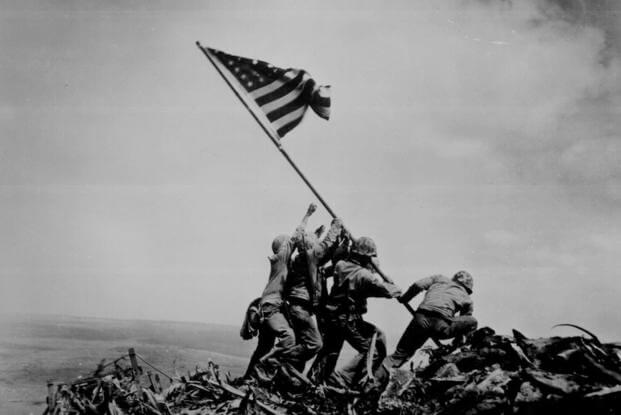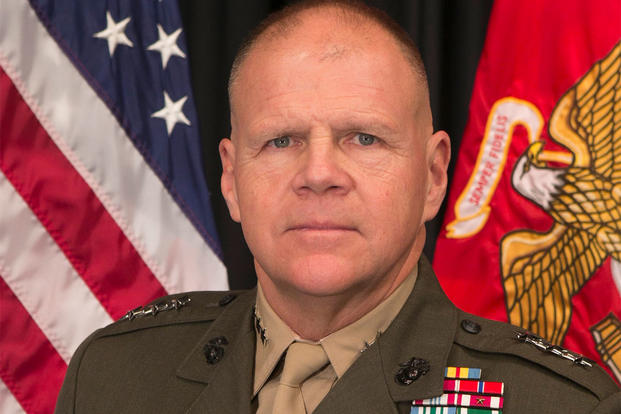As new questions arise about an iconic photograph depicting American Marines raising a flag atop Iwo Jima's Mount Suribachi in 1945, the commandant of the Marine Corps said the heroism of the troops present that day remains unchanged.
Speaking at a Marine Corps Association awards dinner May 5, Gen. Robert Neller addressed the Corps' review of Associated Press photographer Joe Rosenthal's famous image of the Iwo Jima flag raising.
Marine officials announced earlier in the week they were reviewing information provided by the Smithsonian Channel that suggested two of the men in the photograph were misidentified, and that one was actually not part of the flag-raising group.
"We're in the processing of trying for the historical record to determine who really were those men," Neller said. "And I can tell you this: We're going to make our best effort to do that and we'll coordinate with everybody," Neller said. "But at the end of the day, I can tell you this: we know that all the people we believe were there, were on that hill. All. So they all did their duty."
Neller noted that the flag-raising caught on camera by Rosenthal was actually the second of the day, and the one that received the least fanfare at the time. At 10:20 the morning of Feb. 23, 1945, the commandant said, the Marines took a patrol up Mount Suribachi and raises the original flag, to great celebration.
"Everybody stopped and yelled and screamed, and ships blew their horns," he said.
The second, larger flag was raised about two-and-a-half hours later.
Regardless of who was in the photograph, Neller said, the Marines whose names have been tied to the image were all part of the Iwo Jima assault -- "a 36-day fight where a Marine or sailor was killed or wounded, every two minutes, for 36 days.
"At the end of the day, it doesn't really matter," he added. "We'll find out who was who and what, but ... they were all Marines doing their job. And they were trained and they fought hard."
The AP reported May 3 that the work of two amateur historians prompted the Marine Corps to launch its review of the identities of the six men in the famous photograph.
The researchers, Eric Krelle and Stephen Foley, contend that the Marine identifies as Pfc. Franklin Sousley was actually Pfc. Harold Henry Schultz. Sousley, they say, was mistakenly identified as Navy corpsman John Bradley, which would mean that Bradley did not actually appear in the photo.
Bradley's son, James Bradley, told the AP he believes his father was part of an Iwo Jima flag raising, but no longer believes he was pictured in the famous photograph. Bradley is the author of the bestseller Flags of Our Fathers, published in 2000.
"Our history is important to us, and even today, this iconic image still represents the fighting spirit of Marines and is a symbol of the tremendous accomplishments of our Corps," a Marine Corps spokesman, Maj. Christian Devine, said in a May 3 statement.
"As such, with the information and research provided by the Smithsonian Channel, who used advanced digital technology to examine battle footage, the Marine Corps decided to review their photo-enhancements, film analysis, and findings," he said. "This review is still ongoing."
-- Hope Hodge Seck can be reached at hope.seck@military.com. Follow her on Twitter at @HopeSeck.






























